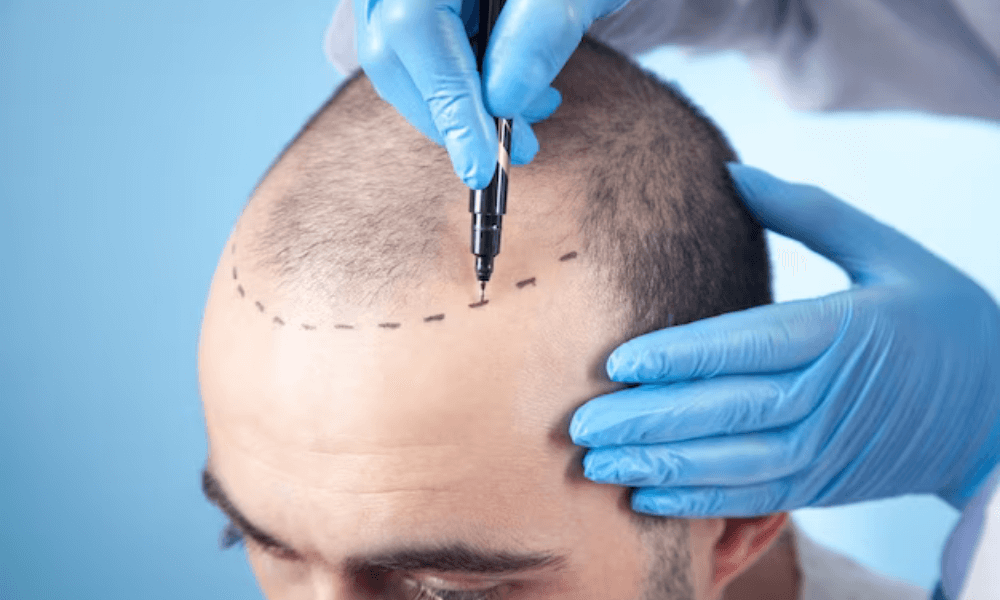
What Are the Long-Term Results of Hair Transplants and How Can I Maintain My New Hair Growth?
Hair loss can be a distressing issue for many people, affecting not only physical appearance but also self-confidence. For those seeking a permanent solution, hair transplants have become a popular and effective treatment. But what are the long-term results of a hair transplant in Melbourne, and how can you maintain your new hair growth to ensure it lasts?
In this article, we’ll explore the long-term results of hair transplants, what you can expect after the procedure, and the steps you can take to maintain healthy, thick hair in the years to come.
What Is a Hair Transplant?
A hair transplant is a surgical procedure in which hair follicles are removed from a donor area (usually the back or sides of the scalp, where hair is more resistant to thinning) and transplanted into areas of the scalp where hair is thinning or has already been lost. It’s a permanent solution to hair loss and offers natural-looking results, making it one of the most effective treatments available.
Unlike temporary solutions like hairpieces or medications, hair transplants offer a more permanent option for individuals suffering from pattern baldness, thinning hair, or other types of hair loss.
How Does a Hair Transplant Work?
During a hair transplant procedure, hair follicles are relocated to areas where hair growth has slowed or stopped. There are two main methods for performing a hair transplant:
1. Follicular Unit Extraction (FUE):
This is a minimally invasive procedure where individual hair follicles are extracted from the donor area and transplanted to the recipient area. FUE leaves no visible linear scar, making it a popular choice for people who prefer shorter hairstyles.
2. Follicular Unit Transplantation (FUT):
Also known as the “strip method,” FUT involves removing a strip of scalp skin from the donor area, which is then divided into smaller grafts and implanted in the balding areas. This method tends to leave a linear scar but can be suitable for people needing a larger number of grafts.
Both methods aim to provide a natural-looking hairline and seamless hair growth by carefully placing the transplanted follicles to match the natural direction of the hair.
Long-Term Results of Hair Transplants
The results of a hair transplant can be impressive, offering long-lasting solutions for hair loss. Here’s what you can expect in the long term:
1. Permanent Hair Growth
Once the transplanted hair follicles settle into their new location, they continue to grow hair just like the follicles in the donor area. This means that, unlike the original thinning or balding hair, the transplanted hair will not fall out or thin over time. The transplanted hair is typically permanent and will last for the long haul.
2. Natural-Looking Results
A well-performed hair transplant results in a natural-looking hairline and evenly distributed hair growth. The transplanted hair grows in the same way as the rest of your natural hair, blending seamlessly with surrounding hair. The precision of modern techniques like FUE ensures that the transplanted hair looks undetectable.
3. Slow Growth Over Time
After the transplant, there will be a shedding phase where the transplanted hair temporarily falls out. This is normal and a part of the hair growth cycle. However, after 3–4 months, new hair will begin to grow. The full results of the transplant are usually visible around 9 to 12 months post-procedure. The newly transplanted hair will continue to mature for up to 18 months, becoming thicker and fuller over time.
4. Gradual Thickening of Hair
The transplanted hair may not appear thick immediately after the procedure, as it will be in its early growth phase. However, as the months pass, you will notice the hair gradually becoming denser and more vibrant. It’s important to be patient, as the process can take up to a year to reach full maturity.
How Soon Will I See Results After a Hair Transplant?
While some results can be seen within a few months, full results from a hair transplant typically take around 12 to 18 months to manifest. Here’s a breakdown of the typical timeline:
- 0–3 months: You might experience shedding of transplanted hair. This is normal and temporary.
- 3–6 months: New hair starts to grow, although it might be fine and soft at first.
- 6–9 months: Hair continues to thicken and mature. The new hair will look more like your natural hair.
- 12 months and beyond: By the end of the first year, you will see the full effect of the hair transplant, with hair that blends well with your natural growth.
How Long Do Hair Transplant Results Last?
Hair transplants provide permanent results, but it’s important to remember that the transplanted hair is only one part of the equation. While the transplanted hair is likely to last a lifetime, the rest of your natural hair may continue to thin or fall out due to age, genetics, or other factors.
This means that, even though the transplanted hair is permanent, ongoing care and sometimes additional procedures may be needed to maintain a fuller head of hair as you age.
How to Maintain Your New Hair Growth
Once your hair transplant has healed and you’ve started to see the new growth, there are several ways to ensure that your results last as long as possible. Here’s how you can maintain healthy hair after the procedure:
1. Follow Post-Procedure Care Instructions
After a hair transplant, your doctor will provide specific aftercare instructions. These might include avoiding certain activities (like strenuous exercise or swimming), not scratching your scalp, and using a mild shampoo. Following these instructions helps the transplanted follicles settle and grow properly.
2. Use Gentle Hair Products
To avoid irritating your scalp, use gentle, sulfate-free shampoos and conditioners. Harsh chemicals can damage the hair follicles and the skin, which can hinder hair growth.
3. Minimize Heat and Chemical Treatments
Excessive use of hot tools (such as straighteners, blow dryers, and curling irons) or harsh chemical treatments (like hair dyes and perms) can damage both transplanted and natural hair. If you must use these products, do so sparingly and at lower temperatures.
4. Eat a Healthy Diet
A balanced diet rich in vitamins and minerals can promote healthy hair growth. Look for foods high in biotin, zinc, vitamin E, and omega-3 fatty acids, all of which are essential for healthy hair. Maintaining good nutrition will also help prevent hair loss in non-transplanted areas.
5. Minimize Stress
Stress can contribute to hair loss, so finding ways to manage stress through relaxation techniques, exercise, and a healthy lifestyle is essential for maintaining your results.
6. Consider Medications
In some cases, your doctor may recommend medications like finasteride or minoxidil (Rogaine) to help maintain the density of your natural hair and prevent further hair loss. These medications can be used in conjunction with hair transplants to support healthy growth in both transplanted and natural hair.
Are Hair Transplants Permanent?
Hair transplants themselves are generally permanent, as the transplanted follicles are taken from areas resistant to hair loss (like the back of the scalp) and moved to areas that are thinning or bald. These transplanted hairs will continue to grow for the long term.
However, as mentioned earlier, the natural hair around the transplanted area may still thin over time due to factors such as aging, genetics, or hormone changes. Therefore, you might need additional procedures in the future to maintain your full head of hair.
Conclusion
Hair transplants in Melbourne offer a promising solution for hair loss, with long-term results that can significantly enhance your appearance. By understanding the process, maintaining your new hair with proper care, and selecting a cosmetic clinic, you can achieve a fuller head of hair and boost your confidence. Whether you’re dealing with thinning hair or bald patches, a hair transplant could be a valuable step toward regaining your youthful look.
















